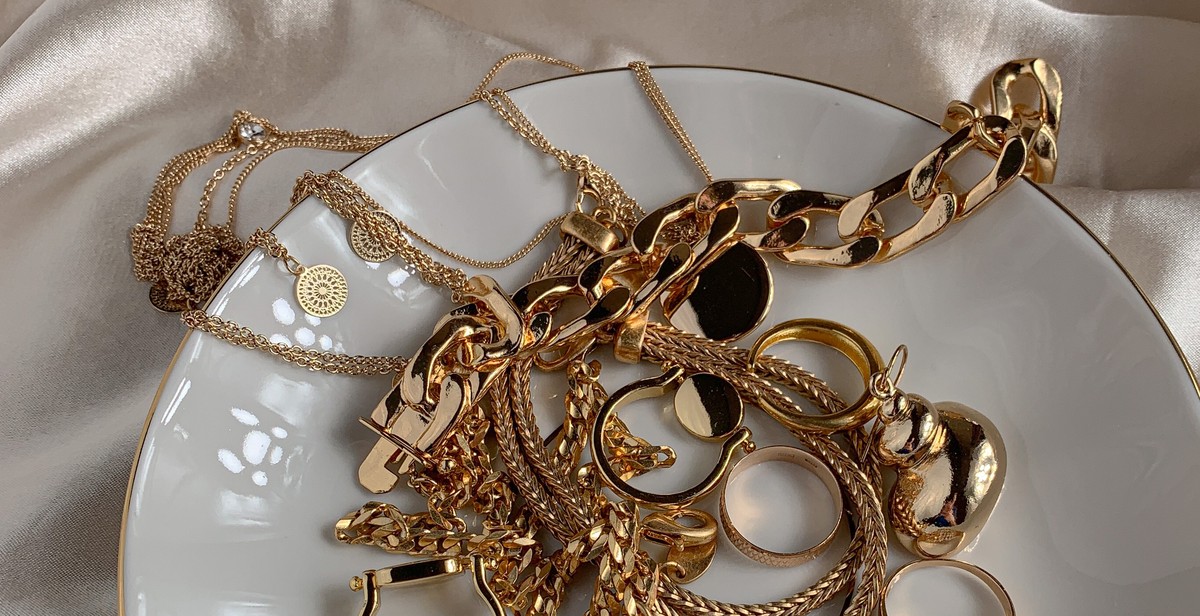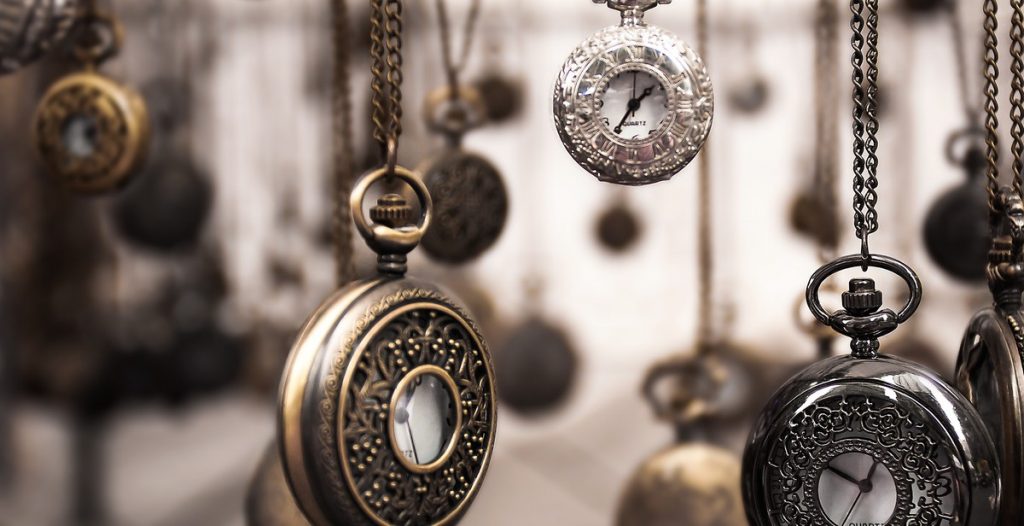Introduction: Understanding the Differences Between 10K, 14K, and 18K Gold
When it comes to buying gold jewelry, one of the most important decisions you will need to make is the type of gold you want. There are several different types of gold available, including 10K, 14K, and 18K, each with its own unique characteristics and properties. Understanding the differences between these types of gold can help you make an informed decision about which one is right for you.
What is Gold Karat?
The term “karat” is used to describe the purity of gold. It is a measure of the percentage of pure gold in a piece of jewelry. Pure gold is 24 karats, but it is too soft to be used in jewelry. Therefore, other metals are mixed with it to create an alloy that is durable enough for everyday wear.
The Differences Between 10K, 14K, and 18K Gold
The main difference between 10K, 14K, and 18K gold is the amount of pure gold in the alloy. 10K gold contains 41.7% pure gold, 14K gold contains 58.3% pure gold, and 18K gold contains 75% pure gold. As a result, 18K gold is the most expensive and purest form of gold, while 10K gold is the least expensive and least pure.
Other factors to consider when choosing between these types of gold include durability, color, and affordability. 10K gold is the most durable and affordable, but it has a lighter color. 18K gold is the softest and most expensive, but it has a richer color. 14K gold is a good compromise between the two.
Now that you understand the differences between 10K, 14K, and 18K gold, you can make an informed decision about which one is right for you.
What is Gold?
Gold is a chemical element with the symbol Au (from the Latin word for gold, “aurum”) and atomic number 79. It is a highly sought-after precious metal that has been used for jewelry, coinage, and other decorative purposes for thousands of years. Gold is known for its unique properties, including its lustrous yellow color, malleability, ductility, and resistance to corrosion.
Composition of Gold
Gold is a relatively rare metal that is found in the Earth’s crust at a concentration of about 0.005 parts per million. It is typically extracted from gold ore using a combination of chemical and physical processes, including cyanide leaching and smelting. The purity of gold is measured in karats (K), with 24K gold being the purest form.
Gold is a soft metal and is often alloyed with other metals to improve its strength and durability. Common alloys include copper, silver, nickel, and zinc. The type and amount of alloying metal used determine the color and other properties of the gold alloy.
Properties of Gold
Gold has several unique properties that make it highly valued for jewelry and other decorative purposes. These properties include:
- Lustrous color: Gold has a distinctive yellow color that is highly prized for decorative purposes.
- Malleability: Gold is a soft metal that can be easily shaped into complex designs.
- Ductility: Gold can be drawn into thin wires or sheets without breaking.
- Resistance to corrosion: Gold is highly resistant to corrosion and does not tarnish or rust.
- High conductivity: Gold is an excellent conductor of electricity and is often used in electronic devices.
The properties of gold can vary depending on the purity and alloying metals used. For example, 10K gold is less malleable and ductile than 18K gold due to the higher percentage of alloying metals.
| Karat | Purity |
|---|---|
| 24K | 99.9% gold |
| 18K | 75% gold |
| 14K | 58.3% gold |
| 10K | 41.7% gold |
Understanding the composition and properties of gold is important when choosing a piece of jewelry or investing in gold. Different purities and alloys can affect the value, durability, and appearance of the gold.
What is 10K gold?
Gold is a precious metal that has been used for centuries to make jewelry and other valuable items. It is a highly sought-after material due to its rarity, beauty, and durability. However, not all gold is created equal, and there are different types of gold available on the market. One of the most common types is 10K gold.
Composition of 10K gold
10K gold is an alloy made of 10 parts gold and 14 parts other metals, such as copper, silver, nickel, or zinc. The percentage of gold in 10K gold is 41.7%, which means that it contains less gold than other types of gold, such as 14K or 18K gold. The other metals added to 10K gold are used to make the alloy harder and more durable, as pure gold is too soft to be used in everyday jewelry.
The composition of 10K gold makes it more affordable than other types of gold, as it contains less gold and more other metals. However, it also means that 10K gold is not as valuable as other types of gold and may not hold its value as well over time.
Properties of 10K gold
Despite containing less gold than other types of gold, 10K gold is still a beautiful and durable material that is commonly used in jewelry. It has a yellow color that is similar to other types of gold, although it may appear slightly lighter or duller due to the other metals in the alloy.
10K gold is also more durable than other types of gold, as the other metals added to the alloy make it harder and less prone to scratches and dents. However, it may still tarnish or corrode over time, especially if it is not properly cared for.
| Composition | Properties |
|---|---|
| 10 parts gold, 14 parts other metals | Less valuable than other types of gold, more affordable, harder and more durable than pure gold, may tarnish or corrode over time |
Overall, 10K gold is a popular choice for jewelry due to its affordability and durability. While it may not be as valuable as other types of gold, it is still a beautiful and versatile material that can be used to create a wide range of jewelry designs.

What is 14K Gold?
14K gold is a popular metal alloy used in jewelry making. It is composed of 58.3% pure gold and 41.7% other metals, such as copper, silver, nickel, and zinc. The term “K” refers to karat, which is the unit of measurement used to determine the purity of gold.
Composition of 14K Gold
As mentioned earlier, 14K gold is composed of 58.3% pure gold and 41.7% other metals. The other metals are added to gold to increase its durability, strength, and resistance to scratches and other forms of damage. Copper is the most commonly used metal in 14K gold alloys, as it gives the metal a reddish hue and enhances its hardness. Silver is used to create a more white gold color, while nickel and zinc are used to create a more yellow gold color.
Properties of 14K Gold
14K gold has a number of properties that make it a popular choice for jewelry making. One of the most important properties is its durability. The addition of other metals to the gold increases its strength and makes it more resistant to scratches and other forms of damage. This makes it ideal for everyday wear.
Another important property of 14K gold is its affordability. While it is not as pure as 18K or 24K gold, it is still considered a high-quality metal and is much more affordable than these higher karat options. This makes it a popular choice for engagement rings, wedding bands, and other types of jewelry that are worn every day.
Finally, 14K gold is also very versatile. It can be used to create a wide range of jewelry styles and can be combined with other metals and gemstones to create unique and beautiful pieces.
| Component | Percentage |
|---|---|
| Gold | 58.3% |
| Copper | 31.7% |
| Silver | 5% |
| Nickel | 5% |
| Zinc | 0.3% |

What is 18K Gold?
18K gold is a popular choice for jewelry making due to its high purity and durability. It is a type of gold alloy that is composed of 75% gold and 25% other metals such as copper, silver, and zinc. The term “K” refers to karats, which is a unit used to measure the purity of gold.
Composition of 18K Gold
The composition of 18K gold is 75% gold and 25% other metals. The other metals used in the alloy are typically copper, silver, or zinc. These metals are added to gold to make it more durable and resistant to scratches and other types of damage. The exact composition of 18K gold can vary depending on the specific jewelry piece and the desired color and properties.
Properties of 18K Gold
18K gold is known for its high purity and rich color. It is more durable than lower karat gold alloys, making it a popular choice for jewelry that will be worn frequently. The addition of other metals to the alloy also makes 18K gold harder and more scratch-resistant. However, it is important to note that 18K gold may still scratch or dent over time, especially if it is not properly cared for.
Another property of 18K gold is that it is less likely to cause an allergic reaction compared to lower karat gold alloys. This is because the other metals used in the alloy can help to reduce the amount of nickel or other allergenic metals present in the jewelry piece.
The color of 18K gold can vary depending on the specific metals used in the alloy. For example, 18K yellow gold is composed of gold and copper, while 18K white gold is typically composed of gold, palladium, and silver. 18K rose gold, on the other hand, is composed of gold and copper with a higher copper content, giving it a pinkish hue.
| Material | Percentage |
|---|---|
| Gold | 75% |
| Copper, Silver, or Zinc | 25% |
In summary, 18K gold is a high-purity gold alloy that is composed of 75% gold and 25% other metals such as copper, silver, or zinc. It is known for its durability, scratch-resistance, and rich color, making it a popular choice for jewelry making.
Which is Better: 10K, 14K, or 18K Gold?
When it comes to buying gold jewelry, one of the most important decisions you’ll make is the karat weight. Karat is a unit of measurement that indicates the purity of gold, with 24 karat being the purest form. But which karat weight is better: 10K, 14K, or 18K?
10K Gold
10K gold is the least pure of the three, containing only 41.7% gold. The remaining 58.3% is made up of other metals, such as copper, silver, and nickel. While 10K gold is the most affordable option, it’s also the least valuable and durable. It’s prone to tarnishing and may cause skin irritation for some individuals.
14K Gold
14K gold is a popular choice for jewelry, containing 58.3% gold and 41.7% other metals. It’s more durable than 10K gold and less likely to tarnish. It’s also a good option for those with sensitive skin, as it contains less non-gold metals than 10K gold.
18K Gold
18K gold is the most luxurious and valuable of the three, containing 75% gold and 25% other metals. It’s softer than 10K and 14K gold, making it more prone to scratches and dents. However, it’s also the most hypoallergenic option and has a richer color due to the higher gold content.
Ultimately, the karat weight you choose depends on your budget, style, and personal preference. 10K gold is a good option for those on a tight budget, while 14K and 18K gold offer more durability and value.
| Karat Weight | Gold Content | Durability | Value |
|---|---|---|---|
| 10K | 41.7% | Less durable | Least valuable |
| 14K | 58.3% | More durable | Mid-range value |
| 18K | 75% | Less durable | Most valuable |

